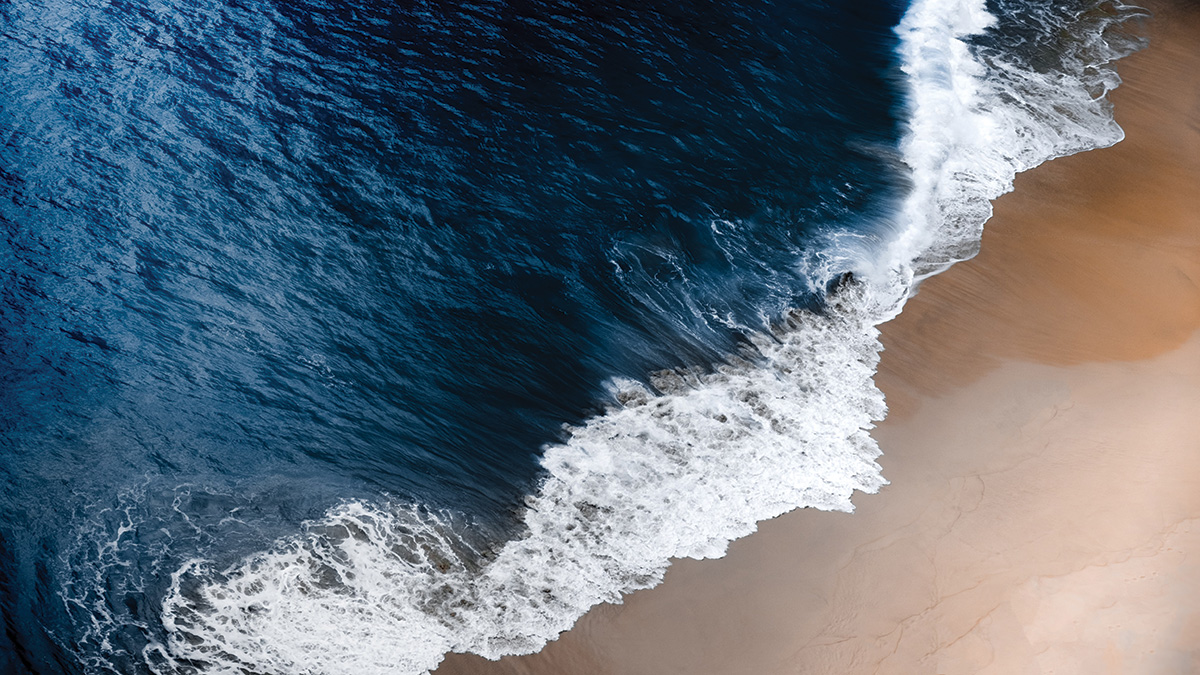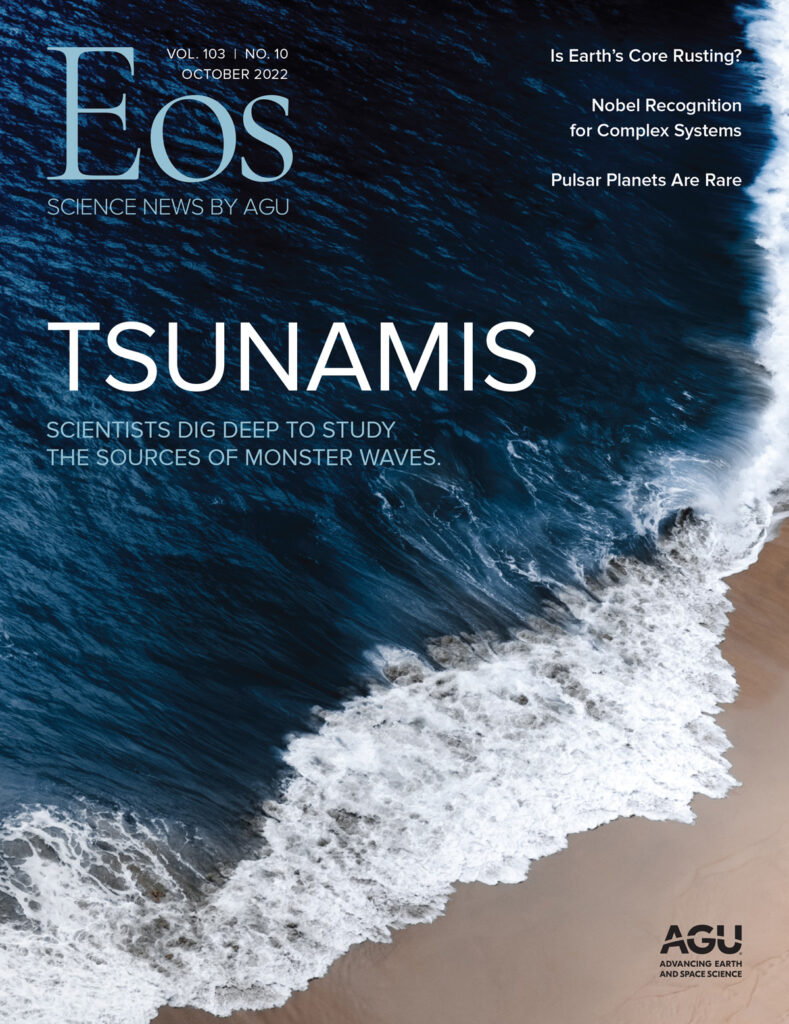Tsunamis are no ordinary waves. Their wavelengths are much longer than surface swells and are caused by a sudden displacement of water, not by wind. Studying tsunami sources can take scientists to the bottom of the ocean—and then below it. We dive deep into the sources of tsunamis in our October issue, literally from cradle to grave.
In “Seismic Sources in the Aleutian Cradle of Tsunamis,” Rob Witter, Rich Briggs, Tina Dura, Simon Engelhart, and Alan Nelson remind us that tsunamis can devastate coastal communities; being better prepared for them will save lives and livelihoods around the world. In particular, tsunamis generated around the Aleutian Islands stretch far beyond their icy shores: In 1946, an Aleutian tsunami caused more than 150 deaths—in Hawaii, not Alaska. The scientists played sleuths to better understand the Aleutians’ complex subduction megathrust, reassessing data from that 1946 tsunami, a mysterious 1788 tsunami, and even paleoseismic events in the region.
A landslide graveyard is our next destination. Suzanne Bull, Sally J. Watson, Jess Hillman, Hannah E. Power, and Lorna J. Strachan show us how it can help us prepare for future tsunamis. The graveyard in question lies beneath the Tasman Sea, and the scientists used a three-pronged strategy to investigate massive landslides that occurred there more than a million years ago. In addition to analyzing sedimentary basins and updating computational models, scientists sailed right into the “roaring forties” for fieldwork amid 8-meter swells. Find some firm footing and learn more in “‘Landslide Graveyard’ Holds Clues to Long-Term Tsunami Trends.”
There’s deep (seafloors and subduction zones) and then there’s deep (Earth’s core). In “Is Earth’s Core Rusting?” Jiuhua Chen and Shanece S. Esdaille take one of the most familiar chemical compounds on the planet—rust—and explore how its possible presence in the outer core could result in intermittent bursts of oxygen at the surface. A rusty core could force scientists to do nothing less than reconsider Earth’s interior and atmospheric evolution.
Speaking of intermittency, Daniel Schertzer and Catherine Nicolis make the case for “Nobel Recognition for the Roles of Complexity and Intermittency.” In 2021, the Nobel Committee for Physics bestowed landmark prizes on three giants in nonlinear geophysics. The prizes were awarded for advances in the physical modeling of Earth’s climate, one of the most complex systems in a discipline built on complex systems. It’s a fascinating look at a neglected, but entirely relevant, “category of mystery.”
I’ll close by recognizing another entirely relevant force making waves with AGU members. Heather Goss, Eos’s former editor in chief, is now our publisher (in addition to other duties as senior director at AGU). In her 4 years at the helm of this publication, she guided its growth in both depth and scope. We’ll work to maintain the high standards she set.
—Caryl-Sue Micalizio ([email protected]), Editor in Chief


